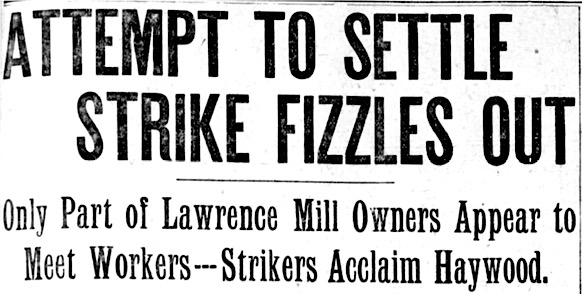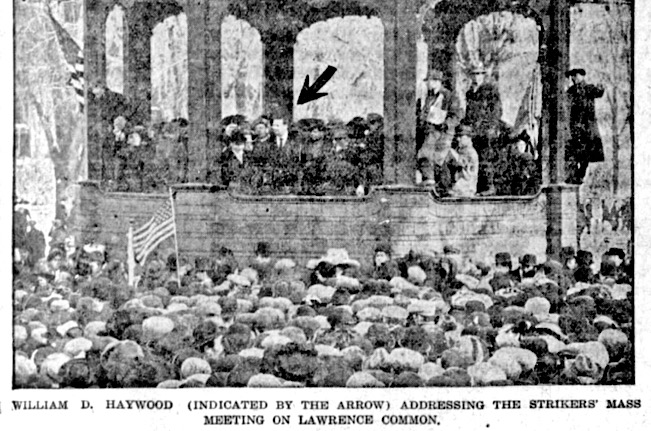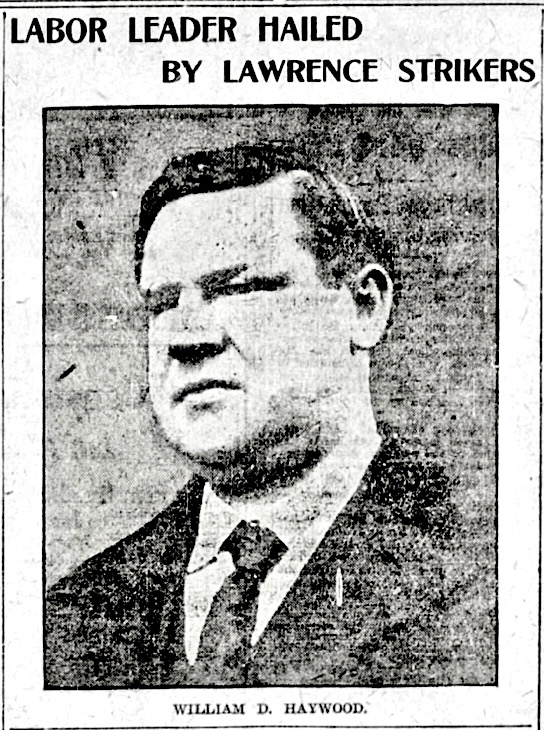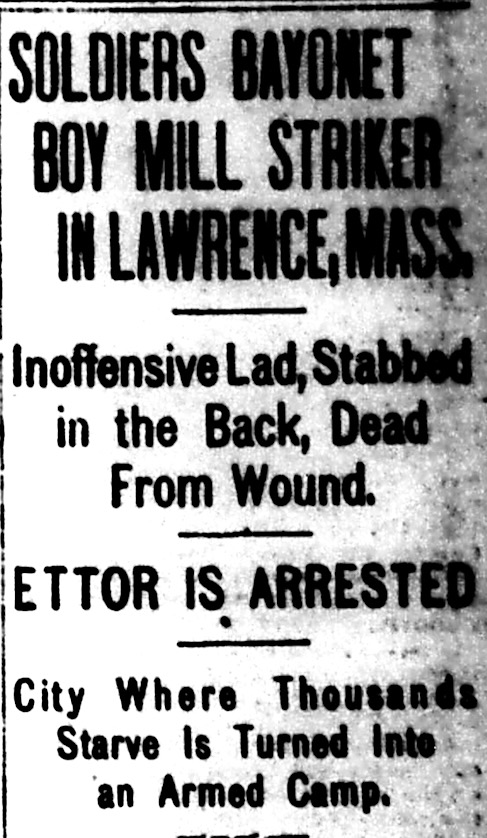 —–
—–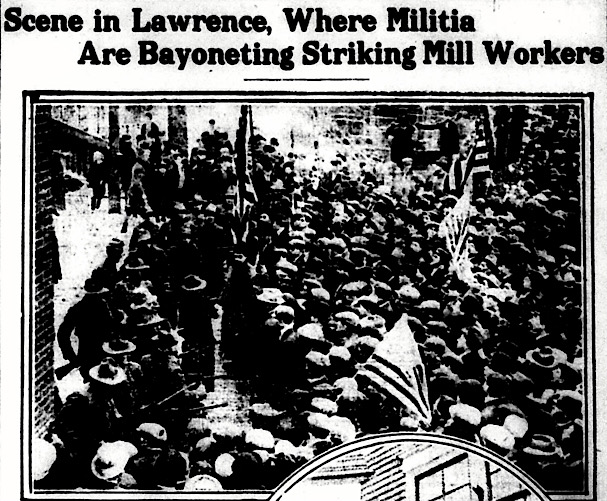 —–
—–
CHEERING THE STRIKERS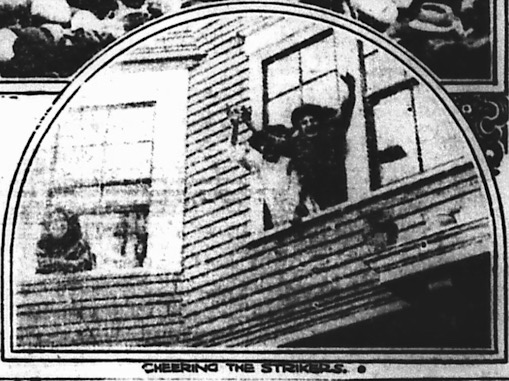
———-
LAWRENCE, Mass., Jan. 30.-Murder was committed on the street in this city today, when an 18-year old Syrian boy striker was bayoneted by a member of a squad of Massachusetts militia on Oak street, and died later in the Lawrence hospital.
The dead boy, John Rami [Ramey], was stuck through the back like a pig as he and some companions were endeavoring to escape from an absolutely unprovoked assault by the soldiers, who are under instructions to look for trouble and when they had it to use steel and ball cartridges as often and as accurately as possible. Many of the militiamen are under-graduates of Harvard University, the president of which is a large shareholder in the Lawrence mills.
Although the police, who witnessed the murder of Rami, declare the boy was doing nothing wrong, the authorities are endeavoring to shift the blame for the lad’s death upon the strikers, and the report has been spread that it is doubtful who killed him. For several hours after the murder the authorities were terrified least the strikers, learning of the fate of the boy, should demand and take vengeance, and every effort was made to hush up the details of the tragedy.
The squad of militiamen, one of whom was responsible, has evidently concocted a story, probably with the connivance of their officers, for they are industriously lying about the matter, declaring they were not near enough to the boy to stab him, and that it was one of his fellow strikers who took his life.
Rami, according to eye-witnesses, was walking along Oak street, with seven companions. As they neared a corner of the street, where a squad of eight armed militiamen were standing, one of the boys said, jestingly:
“There are the soldiers now. Let’s have some fun with them.”
Stabbed in Back.
Immediately the man in charge of the squad ordered the soldiers to charge. Rami, unable to run as fast as his companions, brought up the rear. His steps were slightly retarded by the slippery pavement and he appeared to stumble. As he did so, one of the militiamen caught up with him, and thrusting viciously forward, stuck his bayonet into Rami’s back.
The boy screamed and staggered forward. He ran a few more steps and fell, fainting. Officials at the hospital where he was taken would not say how far the long bayonet blade went into his lungs…..
Strike Leader is Arrested.
Joseph J. Ettor, of New York, national organizer of the Industrial Workers of the world and leader of the woolen strike here, was arrested shortly before midnight on a charge of being an accessory to the murder of Annie La Pizza [Anna LoPizzo], the Italian striker who was killed during the clash in Union street early last evening. Ettor was taken into custody at the hotel where he is stopping when he was about to go to bed and was taken to the police station, where he was locked up. An extra guard of militiamen was thrown about the station for fear that when the news went abroad and attempt might be made by the strikers to storm the place and rescue Ettor.
The strike is assuming its real character-a hunger strike, it is a strike in which empty bellies clamor for food, in which children cry for life’s joys, and woman fight desperately with their men to save themselves from prostitution. And every hour the 25,000 victims of a merciless corporation’s greed realize more clearly the nature of their fight, and grow more grimly determined to win.
[…..]
[Emphasis added]
 —————
—————
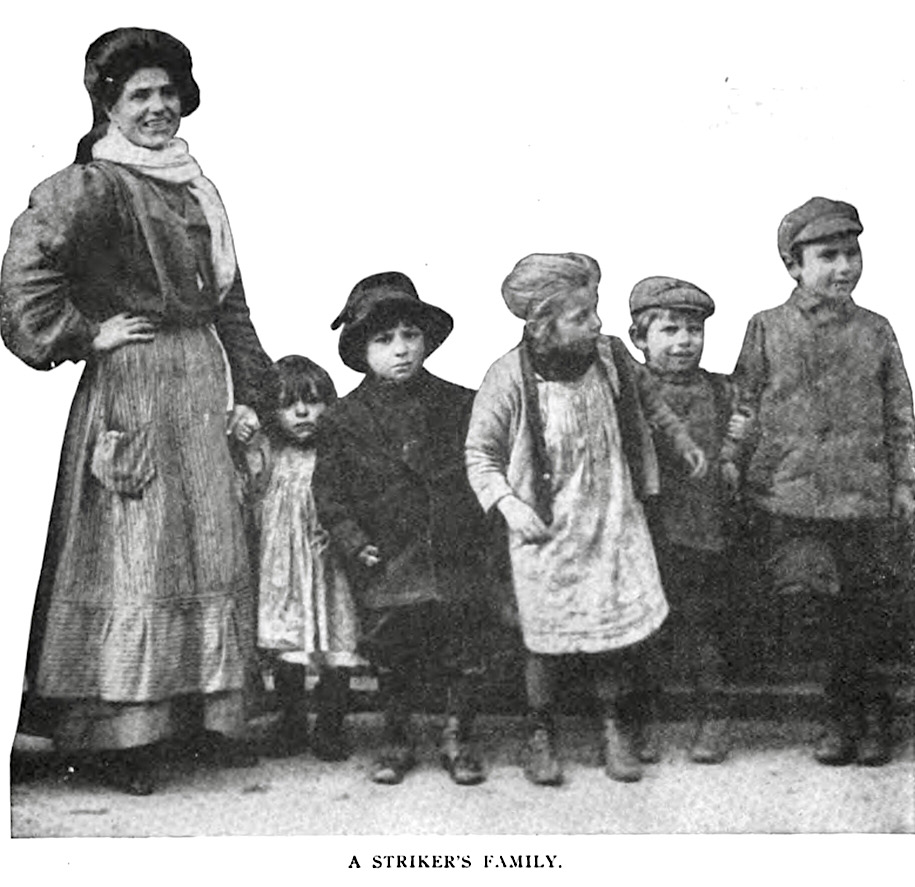
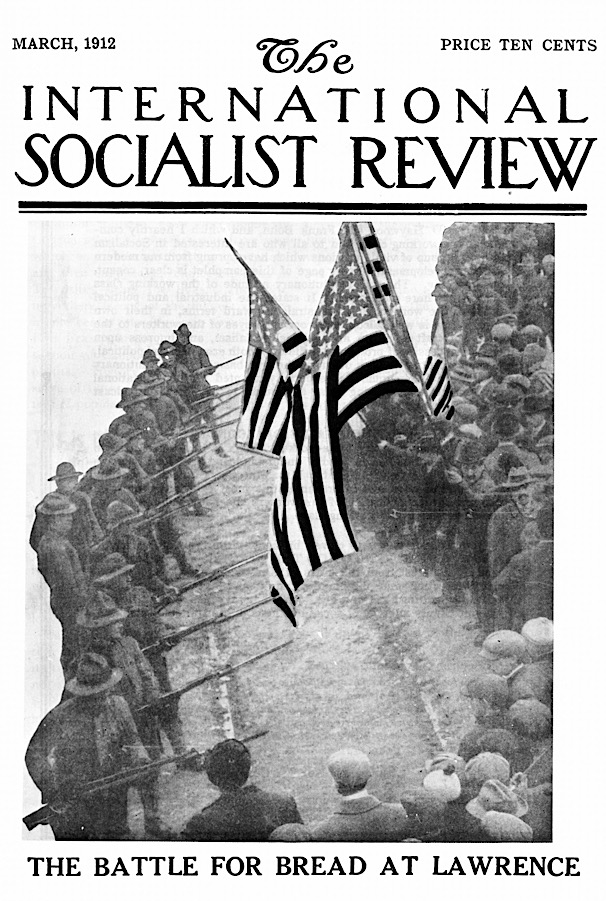
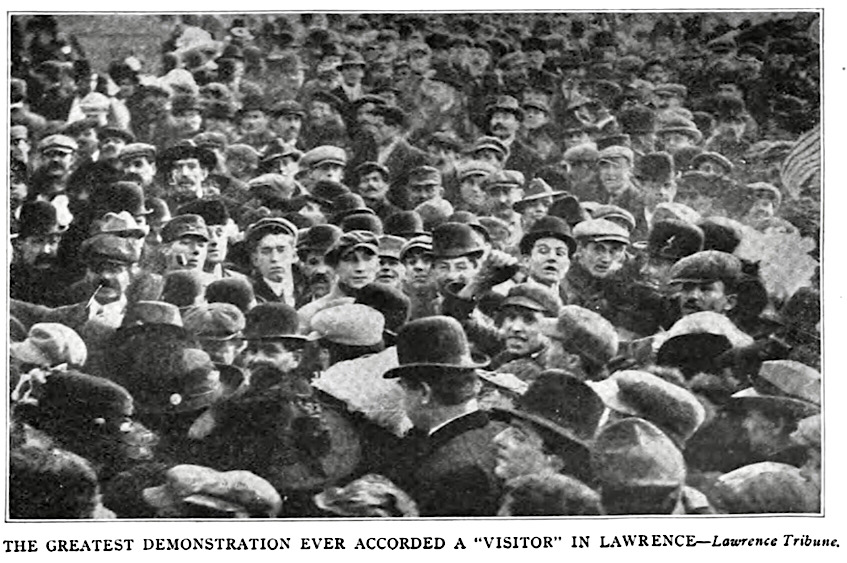
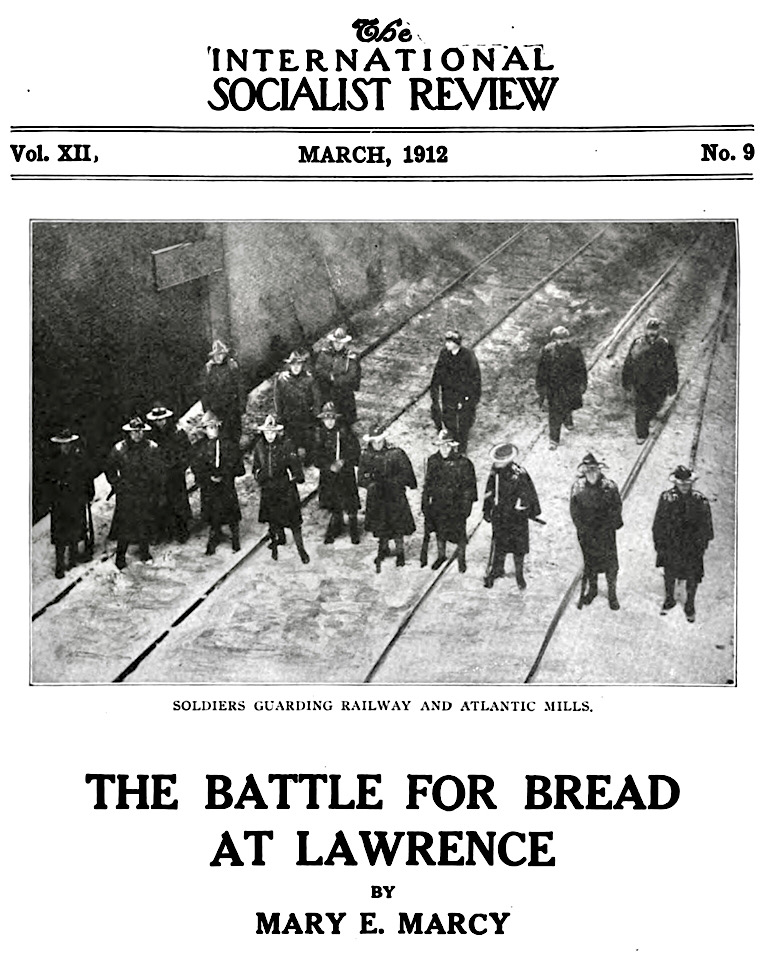
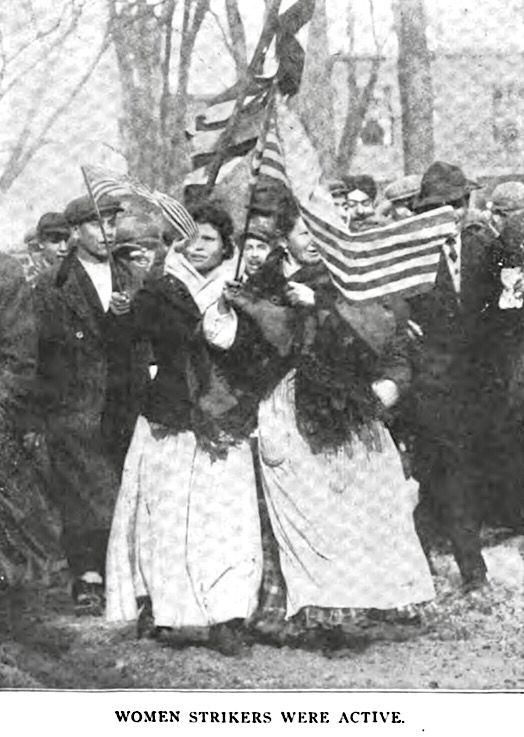
 —————
—————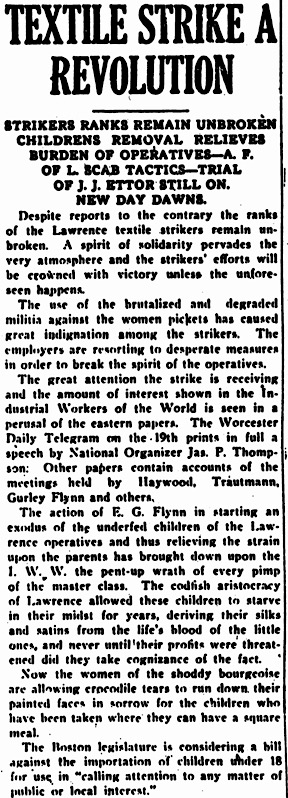
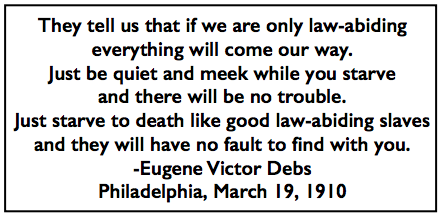 —————
—————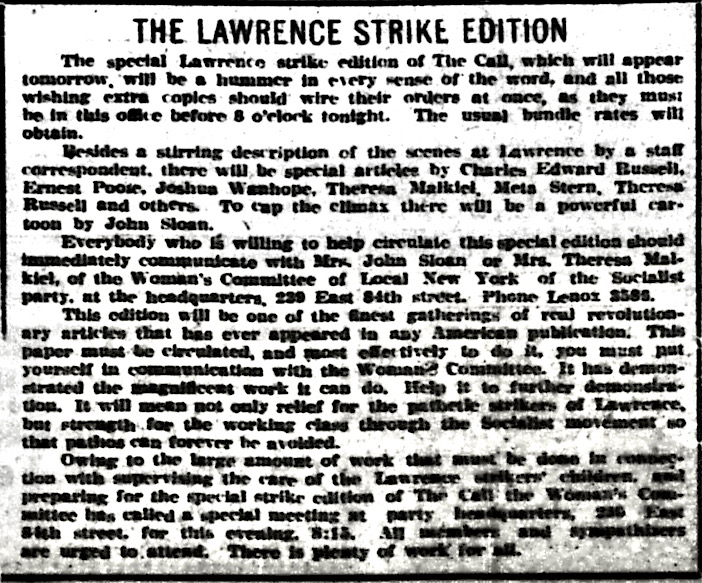
 —–
—–
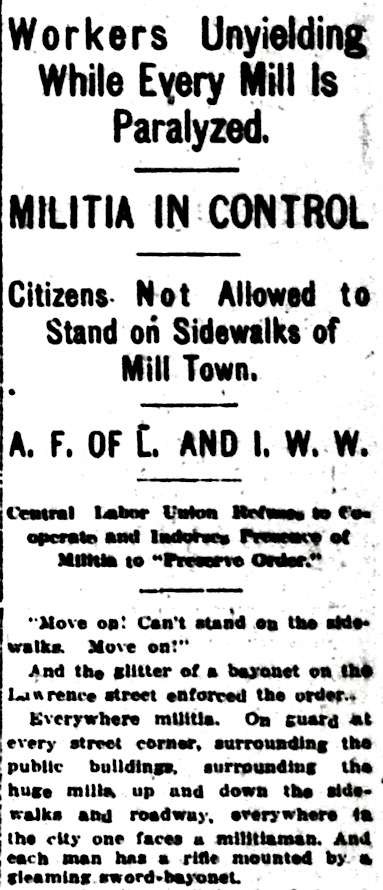
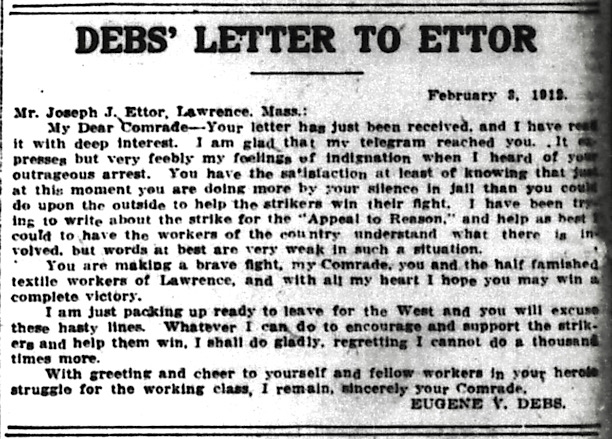
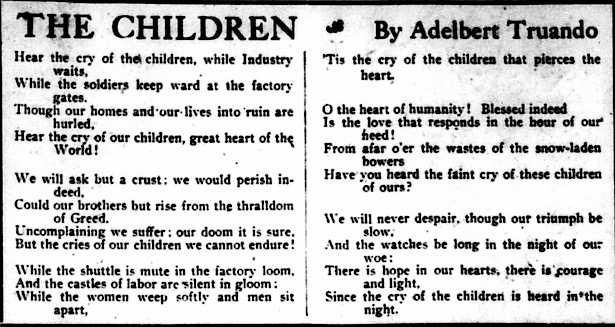
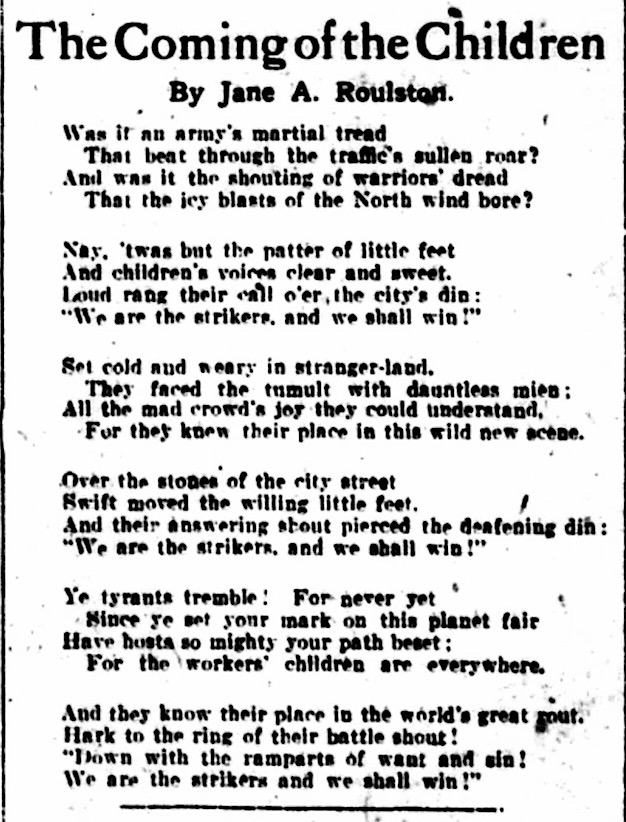
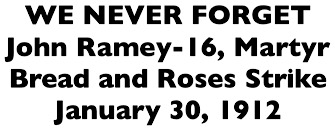 —————
—————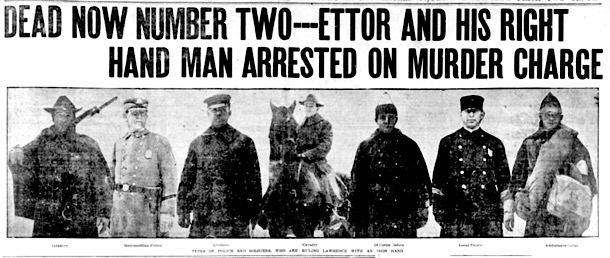
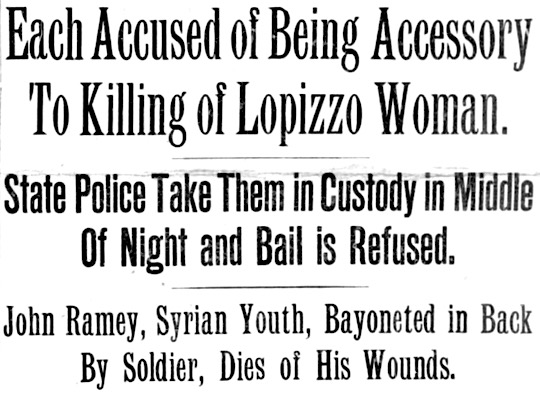 —–
—–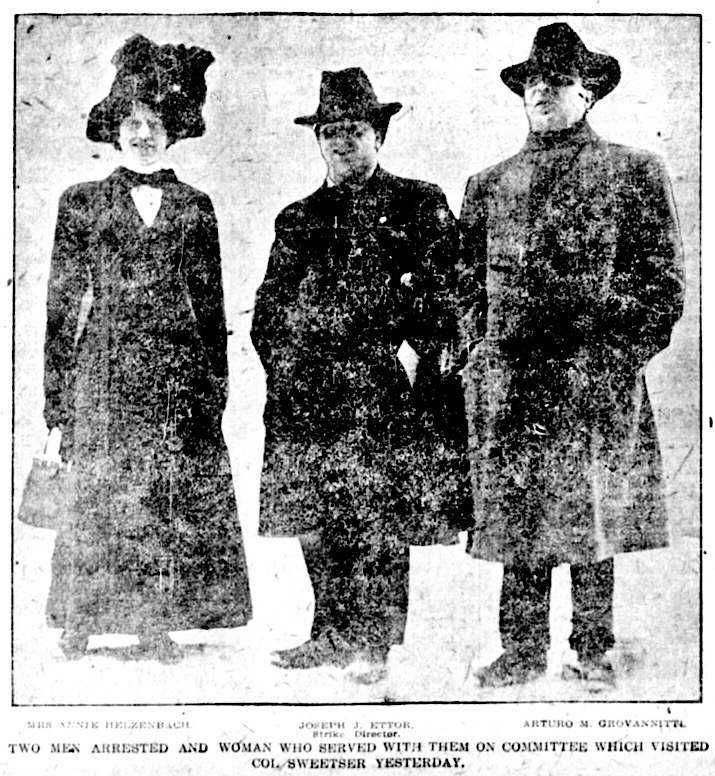
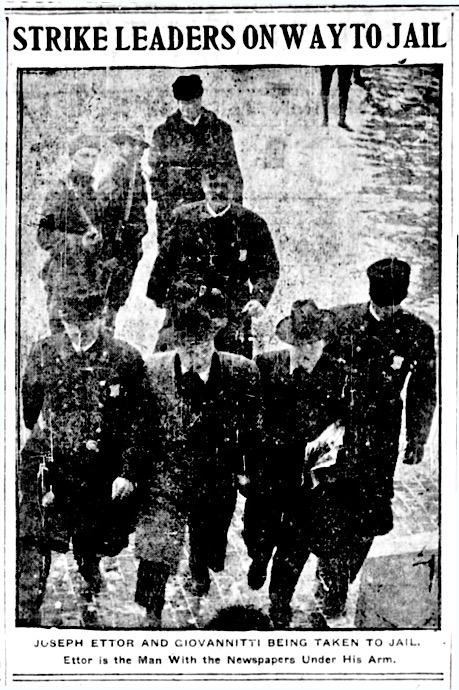
 —–
—– —–
—–
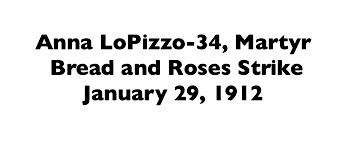

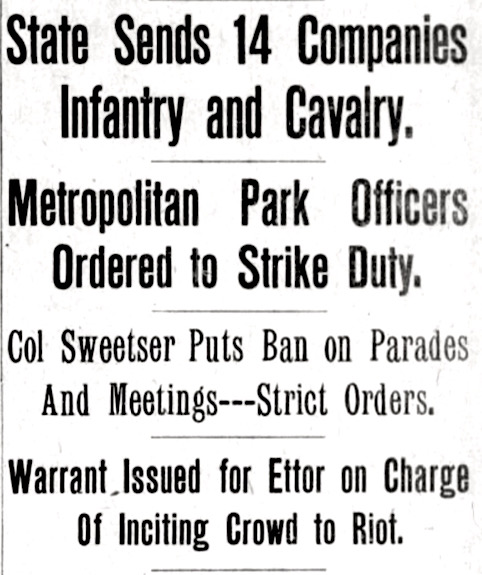
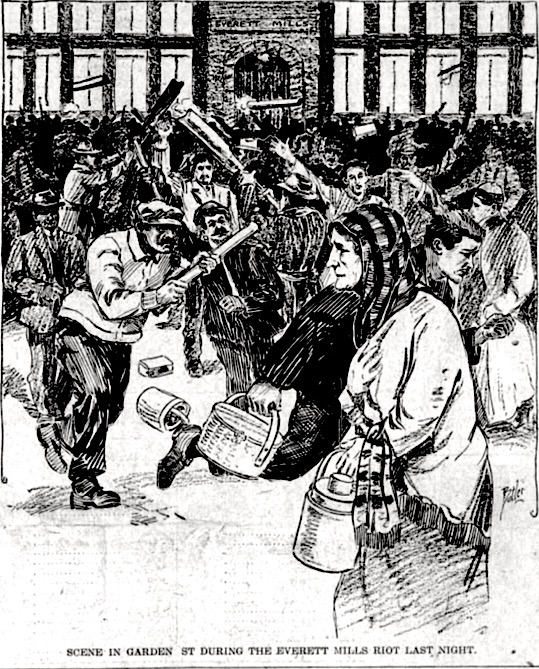
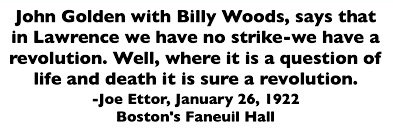 —————
—————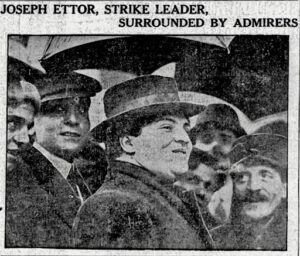
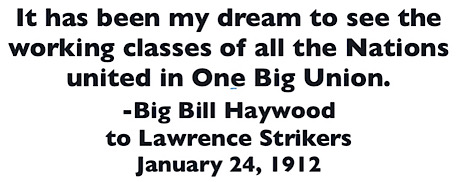 —————
—————